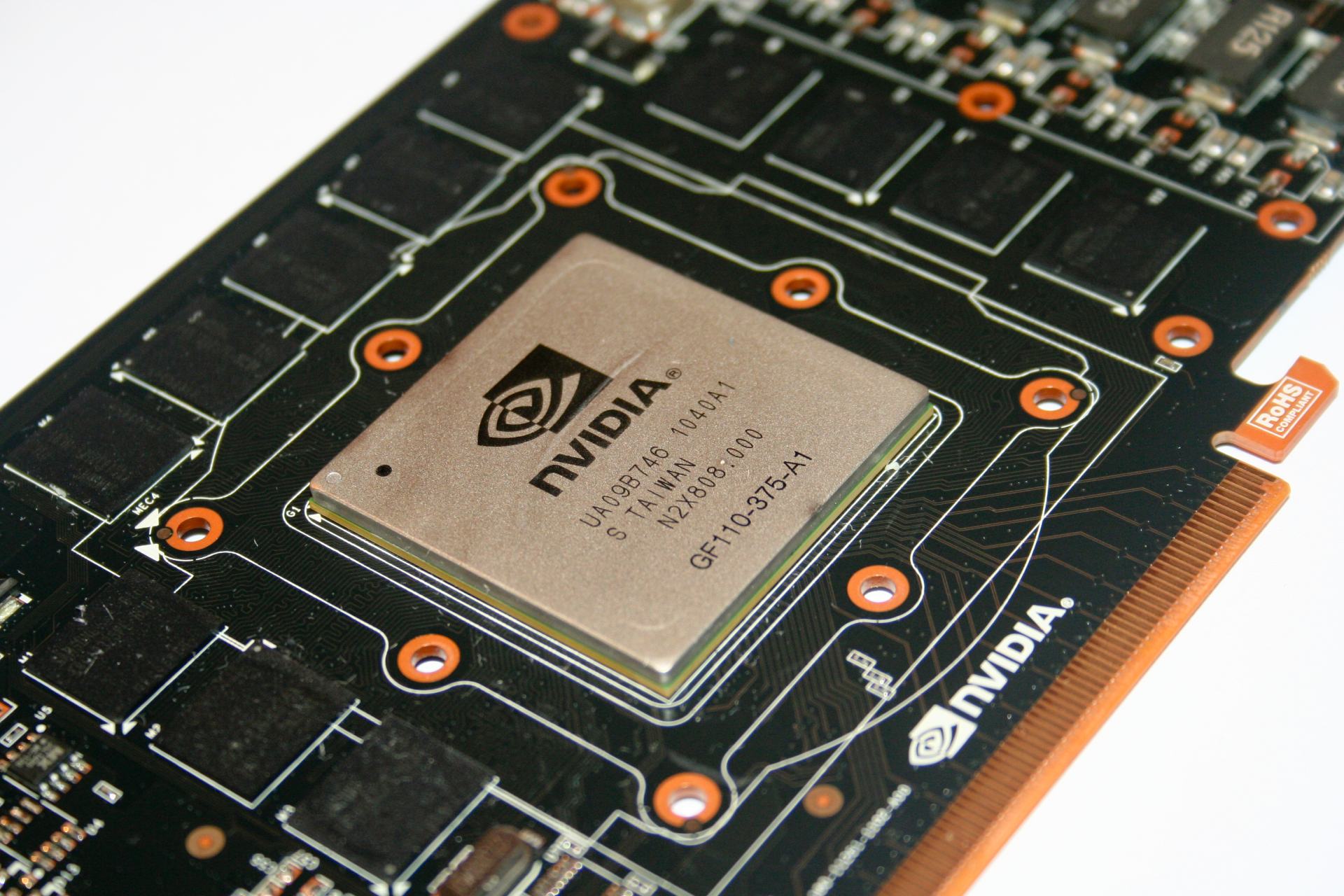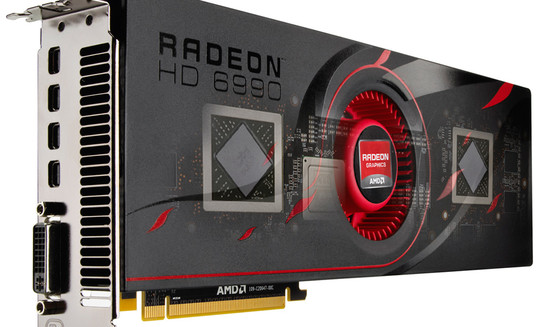March 2011 looks to become an epic battle between NVIDIA and AMD. AMD hit a homerun with the Radeon HD 6990, but NVIDIA is expected to counter on March 22nd with GeForce GTX 590. While NVIDIA does seem to have something out of the ordinary coming, the latest information points to that the clock frequencies have been turned down too low to be really competitive.
AMD has the advantage of having a more energy efficient architecture and even if the card consumes absurd amounts of power to keep performance at its beste it managed through the integrated overclocking profile on Radeon HD 6990 keep the clock frequencies on the same level as the single-GPU cards.
NVIDIA has in turn a more powerful graphics circuit and that it wouldn’t fit, or have enough power, to feed two GF110 GPU circuits at full speed was pretty obvious, but now that we have reliable information on the final clock frequencies we question is this is will be enough to reach the same level of performance as the competition.

GeForce GTX 590 will house two GF110 GPUs, here seen on GeForce GTX 580
NVIDIA has done everything in its power to keep the frequencies of the new card a secret and to minimize the risk for leaks the company has given different information to partners and companies. We can’t say with 100% certainty what the frequencies will be, but after surveying and talking to several informed sources we can conclude the approixmate clock frequencies .
| GTX 590 | GTX 580 | HD 6990 | HD 6990 OC | HD 6970 | |
| GPU | 2 x GF110 | 1 x GF110 | 2 x Cayman XT | 2 x Cayman XT | 1 x Cayman XT |
| GPU clock freq. |
~ 600 MHz | 772 MHz | 830 MHz | 880 MHz | 880 MHz |
| Theoretic perf. |
2,46 TFLOPs* | 1.58TFLOPs | 5,1 TFLOPS | 5,4 TFLOPS | 2,7 TFLOPs |
| Memory buffer |
3 072 MB | 1 536 MB | 4 096 MB | 4 096 MB | 2 048 MB |
| Memory freq. |
~ 3 400 MHz | 4 008 MHz | 5 000 MHz | 5 000 MHz | 5 000 MHz |
* From 600 MHz GPU (1 200 MHz shader), only a guideline.
The two GF110 GPU circuits are said to be working at 600 MHz while the 3GB GDDR5 memory shuffles data at 850 MHz (3 400 MHz effectively). These numbers are not written in stone, but shouldn’t be off with more than a few perfect from the final reference card. NVIDIA will unlike AMD not use double specification profiles but go all in with one card, which was to be expected considering it hasn’t been working with dual BIOS circuits with previous cards.

NVIDIA targets Radeon HD 6990, on March 22nd we will know if it was wise
The grand question is whether these frequencies will be enough to break AMD and its Radeon HD 6990. It was clear that GeForce GTX 580 SLI was a more powerful solution than Radeon HD 6990, even when overclocked to Radeon HD 6970 frequencis. But those cards were clocked at 772 MHz and had memory operating at 4008 MHz. If the clock frequencies are correct NVIDIA has increased performance with around 55% from GeForce GTX 580, while AMD improved its performance with 89% (HD 6990) and 100% (HD 6990 OC) against Radeon HD 6970.
In theory things look very gloomy for NVIDIA. We should not dismiss GeForce GTX 590 though, it may very well be capable of matching the card, but the price tag which is expected to a lot higher will probably make it a tough to convince buyers.




